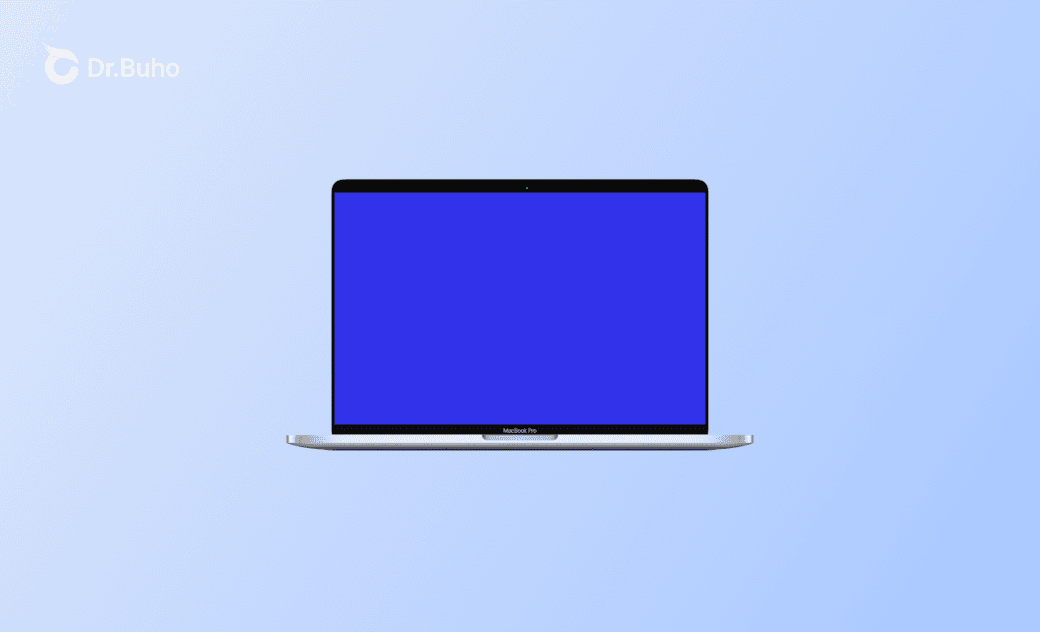Mac/MacBook Blue Screen of Death: Why and 8 Quick Fixes
This post explains why the "Mac Blue Screen of Death" occurs and provides effective fixes for this issue. Read on to learn more.
Although a blue screen on Mac/MacBook rarely occurs during everyday use, it can happen.
Don't worry! In this post, you'll learn 8 practical ways to fix it.
Why is My Mac/MacBook Experiencing a Blue Screen of Death?
Common issues related to the Mac blue screen of death include:
- A blue line on the screen
- A blank blue screen
- A blue screen with a multicolor pinwheel
- A half-blue screen
- A full blue screen
The main causes of the blue screen on Mac are:
- Incompatible startup items or software
- Deleted or corrupted system files
- Problematic peripherals connected to your Mac
How to Fix Mac Blue Screen of Death in 8 Ways
Now that you know the common causes of the blue screen on Mac/MacBook Pro/MacBook Air, here are 8 effective ways to resolve this issue.
1. Restart Your Mac
Restarting your Mac can fix minor system glitches and terminate problematic processes, which may resolve the Mac blue screen of death issue.
2. Boot Mac in Safe Mode
Booting your Mac/MacBook in Safe Mode is a proven way to fix blue screen issues. Many users on Apple Discussions reported resolving this problem by starting their Mac in Safe Mode.
For Intel-based Mac:
- Restart your Mac.
- Immediately press and hold the Shift key until the login window appears.
- Log in to your Mac and follow the on-screen instructions.
For Mac with Apple silicon:
- Shut down your Mac.
- Press and hold the power button until you see "Loading startup options."
- Select a volume.
- Press and hold the Shift key, then click Continue in Safe Mode.
3. Check Login Items
Incompatible login items can trigger the blue screen of death. Find and remove any problematic or unnecessary login items.
To manage login items easily, try BuhoCleaner. This Mac performance monitor and cleaner allows you to quickly enable or disable login items, helping optimize Mac performance.
Or manage login items via Settings: Apple menu > System Settings > General > Login Items.
4. Disconnect Problematic Peripherals
Problematic peripherals may cause a blue screen on your Mac. Disconnect all peripherals to see if the screen returns to normal. Reconnect only the necessary peripherals afterward.
5. Repair the Startup Disk with Disk Utility
Boot disk errors are a common cause of the Mac blue screen of death. Use macOS's built-in Disk Utility to repair your startup disk.
- Boot your Mac in Recovery Mode.
- Select Disk Utility in the Options screen and click Continue.
- Select your startup disk in the sidebar.
- Click First Aid in the toolbar.
- Click Run in the popup message.
- Wait for the repair process to complete.
6. Reset NVRAM
NVRAM stores certain system settings for quick access. Resetting NVRAM can help resolve blue screen issues.
- For Mac with Apple silicon, a simple restart resets NVRAM.
- For Intel-based Mac:
- Restart your Mac.
- Immediately press and hold Option + Command + P + R for about 20 seconds.
- Adjust any system settings that were reset after startup.
7. Update macOS
Ensure your macOS is up to date. Older macOS versions may be incompatible with some applications, leading to system glitches.
The newest macOS version is macOS Sequoia.
8. Reinstall macOS
Reinstalling macOS is the ultimate method to fix persistent blue screen issues. Back up important data beforehand to prevent data loss.
Steps to reinstall macOS:
Step 1Shut down your Mac.
Step 2Start up from macOS Recovery.
For Mac with Apple silicon:
- Press and hold the power button until the startup options appear.
- Click Options > Continue.
- Follow the on-screen instructions.
For Intel-based Mac:
Turn on your Mac.
Immediately press and hold one of these key combinations until you see the Apple logo or spinning globe:
- Command + R – reinstalls the current macOS version
- Option + Command + R – installs the latest compatible macOS
- Shift + Option + Command + R – installs the macOS that came with your Mac or the closest available version
Follow the on-screen instructions.
Step 3Reinstall macOS from macOS Recovery.
- Select Reinstall macOS.
- Click Continue and follow the on-screen instructions.
If none of these methods work, your Mac/MacBook may have a hardware issue. Contact Apple Support for assistance.
Conclusion
Try these tips to fix the blue screen on your Mac. With these methods, your Mac should return to normal functionality.
Wendy is a tech enthusiast with a deep passion for all things iPhone, iPad, and Mac. Wendy is always on the lookout for Apple products and is committed to providing Apple users with some of the latest information and useful tips.
